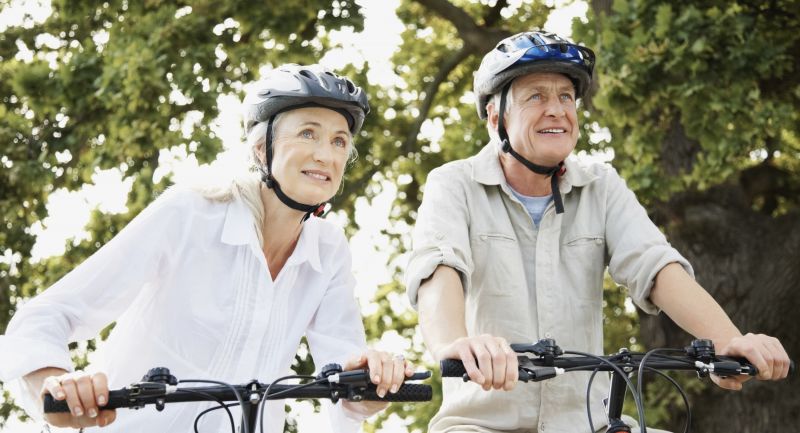Coping with heat is always difficult if you live in a temperate climate. The body never acclimates to the hot and humid days at the height of summer. But does the body become less efficient at dealing with heat as it ages? It may seem like it because you have to adapt each summer. By learning about your body’s heat adaptability you can learn to adjust for the extremes of summer.
The Science of Heat Adaptability
Surprisingly, the available science supports the idea that as you age, your heat adaptability does NOT diminish as long as you remain healthy and active. If you needed more motivation to keep cycling, there it is. The elderly are more at risk for heat stress because they have often reduced exercise participation compared to the general population around them and when they were younger. Heat tolerance diminishes with lower aerobic capacity, the presence of chronic disease, and medication, lower hydration levels, and lower lean body mass. Epidemiological studies point to the elderly having lower heat adaptability compared to those younger, but many also fit these characteristics.
Another study comparing kids and older adults notes that decreased aerobic capacity accounts for lower heat adaptability in the older adults. In the kids it is because of an immature cardiovascular system. Both result in the same outcome – a lower ability to cope with the heat.
Still another study shows that controlling for aerobic fitness and morphological factors are what determine heat adaptability, not aging. It still may seem counter-intuitive, because most of what you hear about aging is that everything diminishes – VO2Max, muscle mass, fast twitch muscle – but if you maintain your fitness you will maintain your ability to cope with heat.
Coping Better with Heat
Sometimes you cannot control the hand you are dealt. Your aerobic capacity does diminish because you do not have as much time to ride and you lose some lean body mass. How do you cope with the heat then?
The key is to keep your internal temperature down. There are a lot of steps you can take to keep your temperature down and keep riding.
- Ride at cooler times of the day. The morning tends to be cooler than the evening, but work with what you can. Avoid the heat of the day.
- Ride at lower intensity and duration when it is extra hot.
- Some routes are shadier than others. Choose the cooler one.
- Make an ice sock. Take pantyhose, put some ice in it and pin it to the inside top of your jersey so it sits just below your neck. It is shocking at first, but will feel great after a minute. The biggest ice socks will last an hour and a half.
- Hydrate! If you do not have enough fluid on board, you will not sweat enough to properly cool yourself. Carry a third bottle in a jersey pocket or stop frequently to fill up the two bottles on your bike. And hydrate with more than just water. Electrolytes are important!
- Wear light clothing. If you foresee riding in the heat, it is worth investing in an extra light jersey and bibs. You may need to put sunscreen on under the jersey because some of them are that light. Get a full zip jersey so you can completely open the front for maximum air flow.
- A flatter route will keep you cooler because the higher speed keeps more air coming over you. You may think a descent will keep you cool but the amount of time you’re climbing compared to how much your descending simply doesn’t equal out.
- Take a break under a shady tree (or an air conditioned building) to cool off. A coffee shop is always a good option for a cold beverage.
If you know ahead of time that you will be riding in the heat, you can acclimate yourself. Your body will adapt to heat exposure gradually. Fortunately, summer sets in gradually too. If that does not work for you, you can do short indoor sessions at low intensity without a fan (and plenty of water!) to start the adaptation. The more heat you ride in, the higher your sweat output will be for a given intensity and temperature.
Keep Fit and Beat the Heat
Staying fit is the number one way to stave off the effects of heat while riding. Even if you do manage to keep your fitness, these tips will help make your rides more comfortable and help you perform better when the temperature climbs.
